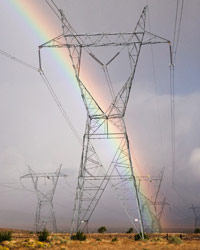Staying Fit
En español | AARP is dedicated to helping you save money on your home energy bill by fighting against unfair utility rate hikes. But you may also be able to save money by familiarizing yourself with your monthly bill. Understanding what to look for on your bill can help you identify errors and allow you to monitor your energy usage. Utility bills differ by energy type (electricity, natural gas, etc.) and distributor (your natural gas or electric "company," also known as a utility). However, there is some key information you should look for when reading your bill. This information will allow you to interpret what you are paying and why.
See also: Save up to $1,000 a year on your energy bills.


AARP Membership— $12 for your first year when you sign up for Automatic Renewal
Get instant access to members-only products and hundreds of discounts, a free second membership, and a subscription to AARP the Magazine.
Understanding Your Charges
While there may be some difference in specific terms for charges from one utility or another, below are the major categories to look for:
- Supply Charge – the amount you are charged for actual energy consumed in your home. It generally will make up the largest portion of your overall bill. This charge takes into account your energy usage and the costs needed to generate that energy. It is measured in kilowatt hours (kWh) for electricity and therms (TH) for natural gas, and allows you to see the rate you are charged per kWh or TH.
- Distribution Charge – this charge is to compensate your local utility for the costs associated with transporting and delivering power to your home. It can also include charges for administering your account services, like maintenance, repairs, meter reading and emergency services.
- Basic or Customer Charge – a flat fee covering routine business and administrative costs.
- Taxes – any federal, state and local taxes will be included on your bill.
- Extra Fees and Surcharges – your bill may include miscellaneous charges for a wide variety of things such as upgrades to infrastructure, installation of smart meters, the use of renewable energy and more. Pay close attention to this category to make sure you understand what fees you are paying and why those fees are being applied to your account. Do not hesitate to contact your utility's customer service department should you have questions about any of the charges on your bill.
Next: Knowing How to Read Your Bill >>


































































More on Politics
Why Is Your Water Bill Soaring?
Aging infrastructure is one factorWhich States Have The Most Expensive Utilities?
You don't have to move to lower your utility bills
How to Cover Rising Utility Bills
Home heating costs are soaring as we head into the winter